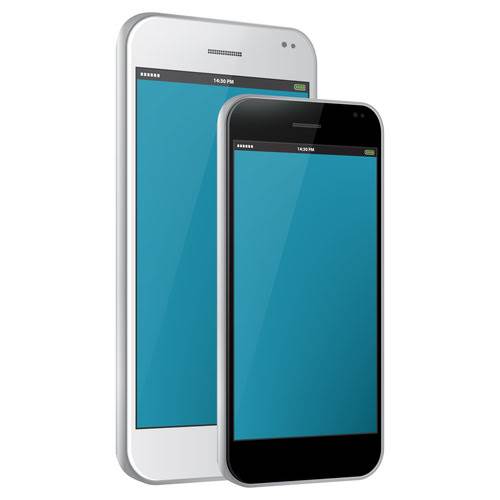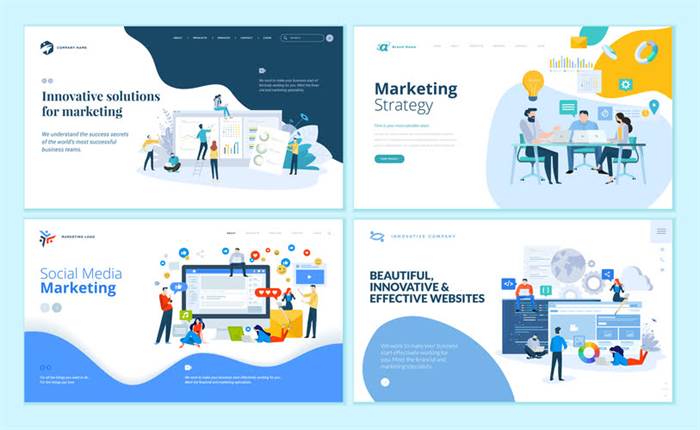These compress operating systems into barebones packages, therefore also making them highly transportable between teams not physically co-located. Using this kind of technology can make it much more effective to quickly spin up new testing environments as the pipeline requires it. In traditional development approaches, developers may be encouraged by team leaders to sit on their code as long as possible. Ideally ironing out preliminary bugs before passing it on any further. Developers work in teams in order to produce code that will later be compiled and delivered in the form of staged releases to end-users. Continuous delivery is the automated delivery of completed code to environments like testing and development.
Teams that practice CI/CD can quickly release new application code to production when it makes the most business sense to do so, rather than based on predetermined release windows. CI/CD refers to practices for software engineering and deployment. Continuous Integration and Continuous Delivery (CI/CD) processes exist to solve many problems within the SDLC.
In a continuous delivery pipeline, it is sent to human stakeholders, approved and then deployed. In a continuous deployment pipeline, the build automatically deploys as soon as it passes its test suite. CI/CD tools are part of a set of technologies for building cloud native applications. VMware tools and services are purpose-built for developers to boost feature velocity and for operations teams to deliver world-class uptime.
Automated build-and-test steps triggered by CI ensure that code changes being merged into the repository are reliable. The code is then delivered quickly and seamlessly as a part of the CD process. In the software world, the CI/CD pipeline refers to the automation that enables incremental code changes from developers’ desktops to be delivered quickly and reliably to production. Continuous integration is a software development practice where members of a team use a version control system and integrate their work frequently to the same location, such as a master branch.
Spend weeks integrating it back into the main codebase. And only then start tracking actual revenue in the production system. Poor code/task organization leads to branching, branching leads to merging, merging… Continuous integration as a practice addresses this by encouraging everybody to work from the same shared source. Individual work items should be discrete enough to be completed in a short amount of time . One or two developers create branches in the source control so they can work on their feature „without being bothered by other people’s changes“.
Continuous Integration vs Continuous Delivery
CD provides an automated and consistent way for code to be delivered to these environments. Because builds are always release-ready with CI/CD, customers experience fewer service interruptions, and their feedback can be integrated much more quickly. CI/CD brings clarity to work by defining processes and timelines for code commits and build launches. With clearer goals, teams can move with greater agility. For instance, ReactJS is a widely used JavaScript framework.
- Implement a task in the pipeline that compiles application source code into a build.
- It is critical that teams build in security without slowing down their integration and delivery cycles.
- But CI tools are the only subject that the page discusses.
- Ideally within minutes to avoid developers switching context all the time with highly async feedback from the CI builds.
- ● Present your team and organization as a more attractive employer for future talent.
- Interactive application security testing analyzes traffic and execution flow to detect security issues, including those in third-party or open source components.
With CI/CD, testing becomes part of the development process. There’s no need for a separate QA team that tests software at the end of the development process. The responsibility to test new code falls to development teams, requiring QA engineers to join with developers, designers, and project managers on balanced development teams. CD or Continuous Delivery is the practice of ensuring that code is always in a deployable state. It doesn’t matter if deployment involves a large-scale distributed system, an embedded system, or a complex prod environment.
Customers see a continuous stream of improvements, and quality increases every day, instead of every month, quarter or year. Feature flags become an inherent part of the process of releasing significant changes to make sure you can coordinate with other departments (support, marketing, PR…). Less context switching as developers are alerted as soon as they break the build and can work on fixing it before they move to another task.
Continuous Deployment (CD)
Synopsys CI/CD MAP services provide consultation support to help you develop a maturity action plan according to the state of your organization’s DevSecOps readiness. Explore more resources to learn about CI/CD and other DevOps solutions and processes. If you want to take full advantage of the agility and responsiveness of DevOps, IT security must play a role in the full life cycle of your apps. Teams may also want to consider managed CI/CD tools, which are available from a variety of vendors.
Continuous delivery happens in production-like staging environments where QAs review the code, fix bugs, and run automated tests to ensure that builds are always deployable and release-ready. The next step in the pipeline is continuous delivery , which puts the validated code changes made in continuous integration into select environments or code repositories, such as GitHub. Here, the operations team can deploy them to a live production environment. The software and APIs are tested, and errors are resolved through an automated process.
The Top Three Ways to Build Security into DevOps
Whether continuous deployment is part of your pipeline or not, adopting the CI/CD process will still be highly beneficial. This continuous testing offers faster bug fixes, ensures functionality and, ultimately, results in better collaboration and software quality. A key characteristic of the CI/CD pipeline is the use of automation to ensure code quality. Here, the automation’s job is to perform quality control, assessing everything from performance to API usage and security. This ensures the changes made by all team members are integrated comprehensively and perform as intended. One of the largest challenges faced by development teams using a CI/CD pipeline is adequately addressing security.
Its goal is to develop and maintain a common, shared culture between teams, thus implementing shared business processes and enhancing collaboration levels. Working using CI is one of the pillars of modern software development. The technique is very well documented and known at this point in time.
While CI/CD helps developers update code swiftly, DevOps streamlines the overall product development. CI/CD focuses on software-defined life cycles highlighting tools that emphasize automation. Your organization should make sure that each foundation is really solid before moving up. Trying to adopt Continuous Deployment without fully embracing Continuous Delivery first is a losing battle. Alice, Bob, and Charlie are unhappy because they always learn about integration issues right before a release is about to happen.
Integration periods feel like firefights where multiple issues appear at the same time. This also means avoiding less obvious areas of inefficiencies. Don’t make 10 different builds in the same day if there is no practical way to test and deploy those 10 builds in the same day.
However, such a paradigm could also allow undetected flaws or vulnerabilities to slip through testing and wind up in production. For many organizations, automated deployment presents too many potential risks to enterprise security and compliance. These teams prefer the continuous delivery paradigm in which humans review a validated build before it is released.
In the final step of the CD process, the DevOps team receives a notification about the latest build, and they manually send it to the deploy stage. Continuous deployment has numerous benefits for developers and customers. Devs using continuous deployment solutions no longer need to worry about manual build deployment and can focus on more skill-based tasks.
Benefits of Continuous Delivery
It primarily speeds up the development and release cycles while maintaining software quality simultaneously. Diving into the difference between CI and CD is imperative to understand better what it means. ● Allow your development resources to spend more time on developing code and planning features and spend less time on ironing out bugs and kinks. CI/CD tools are great ways to begin the transition towards more segmented development workflows, allowing QA resources to focus on what they do best. This code needs to be continuously integrated into the CI/CD pipeline.
CI/CDDevOpsCI/CD compiles all updates to the code of an application into a single repository, after which, automated testing is performed on it. Releases create tension between developers and operations (who want stability and don’t want to deploy too many new features at once). The production environment is usually found to be different than the testing environment requiring extra configuration at the last minute. The main issue here is the single “integration” phase that happens at each product release. This is the pain point of the workflow and it prevents the team from having stress-free releases.
We all can overcome these challenges by working together, improving our tools, processes, knowledge and training our workforce. But what are the differences and how do the different approaches fit into the development process. Craft your CI and CD builds to achieve these goals and keep your team productive. Use them as lessons learned to strengthen your workflow every time they do.
You should see your features developed locally in production in a matter of minutes after merging. The risk of releases is also taken further down, as you should strive for deploying in small batches http://smipfo.ru/index-125.htm to make troubleshooting easier in case of any problem. With all this continuity, your users will see continuous improvements in your application, instead of seeing big changes every now and then.
It has a simple and intuitive user interface that makes it easy for developers to set up and configure their pipelines. On the other hand, Jenkins is a highly customizable tool that requires some technical expertise to set up and configure. It has a steep learning curve, and new users may find it challenging to get started. Synopsys’ comprehensive set of application security testing tools help you test for and remediate security vulnerabilities in your CI/CD pipeline. With continuous delivery, the goal is to keep changesets small enough that no updates to the main build will compromise the final product’s “production-ready” status.
Because Continuous Delivery actually makes perfectly good sense to everyone – even if you are doing embedded software in devices or releasing Open Source plugins for a framework. This way a developer will naturally have at least one integration per day. Continuous Integration basically just means that the developer’s working copies are synchronized with a shared mainline several times a day. Agile development methods result in smaller, iterative bits of code that can be tested and delivered more quickly, enabling CI/CD. Reduce the risk of software not functioning properly in production.
IT Service Management
When I first started learning about continuous integration and delivery, I had a lot of confusion around the terms and this is probably something a lot of you can relate to. At that time, I haven’t even heard about continuous deployment, so when I did, it just made things worse. As appears from the description above, continuous integration is simply the process of integrating changes made to the code into a mainline code base. For this, developers use platform specifically designed for this purpose. In theory, with continuous delivery, you can decide to release daily, weekly, fortnightly, or whatever suits your business requirements. What is Continuous DeploymentWith the help of CI we have created s build for our application and is ready to push to production.














